|
POLICY SCAN
CBIC Circular no:
08/2025- Customs dated 24th March 2025:
Clarification on the scope of the Camera Module
of Cellular Mobile Phones.
The Central Board of Indirect Taxes & Customs (CBIC)
has issued Circular No. 08/2025-Customs on March
24, 2025, clarifying the scope of camera modules
for mobile cellular phones under Notification
No. 57/2017-Customs.
Key takeaways:
a)
Definition of Camera Module:
a.
A camera module consists of lens, sensors,
FPCB assembly, bracket/holder, connectors, and
mechanical parts.
b.
The “essential character” of a camera
module is determined by its primary function
as a camera, irrespective of design changes
due to technological advancements.
b)
Classification & Eligibility for
Concessional Duty:
a.
Complete camera modules
(including single or multiple cameras) meant for
mobile phone manufacturing will qualify
for 10% Basic Customs Duty (BCD) under
S. No. 5A of Notification No. 57/2017-Customs.
b.
Individual components
of a camera module (imported separately) will
not qualify for this concessional rate and
will attract applicable duty rates.
c)
Clarification on Structural
Elements:
a.
Parts such as metal chassis, plastic covers, or
holders only providing strength or protection
without additional functionality will still be
considered part of the camera module assembly.
d)
Duty Implications:
a.
If a camera module is imported as a fully
integrated assembly, it will continue to get
the concessional duty.
b.
If components of a camera module are imported
separately, they will be taxed at
standard BCD rates.
Impact
on the Mobile Phone Industry:
-
Provides clarity for
importers on duty benefits for camera
modules.
-
Ensures uniformity in
classification across customs office.
-
Prevents misclassification
of imports where structural components
were previously considered non-camera
parts and taxed separately.
This
clarification
is expected to streamline imports and
prevent disputes related to the
classification of camera modules under customs
laws.
For more details, members are advised to refer
to the official CBIC website regarding CBIC
Circular no: 08/2025- Customs dated 8th March
2025.
CBIC Notification No. 21/2025-Customs dated 28th
march 2025: Government
Issues Amendment to notification no.
22/2022-Customs to notify the fourth tranche of
tariff concessions under India-UAE CEPA.
The Government of India has
issued Notification No.
21/2025-Customs, which comes into effect on
April 1, 2025. This latest amendment, announced
by the Ministry of Finance’s Department of
Revenue, revises the customs duty rates by
replacing Table I of the previous notification
(No. 22/2022-Customs, dated April 30, 2022).
The new table provides an updated
schedule of duty rates for a wide range of
goods, including various electrical and
telecommunications equipment—with rates set at
percentages such as 0%, 1.5%, 2%, 2.5%, 3%, 6%,
and 12%. This update follows the earlier
amendment made on February 1, 2025, and is aimed
at aligning customs regulations with current
trade needs and public interest.
The new tariff structure will be
relevant for manufacturers, importers, and
exporters of electrical machinery, electronic
goods, and related components, and it reflects
the government's efforts to fine-tune import
duties to ensure a balanced approach to both
industry interests and public policy.
For more details, members are advised to refer
to the official CBIC website regarding CBIC
Notification No. 21/2025-Customs dated 28th
March 2025 and refer to the specific HS codes
and corresponding duty rates as listed Table I.
CBIC Notification No. 22/2025-Customs dated 28th
March 2025 : Government Issues Amendment to
notification no. 25/2021-Customs to notify the
fifth tranche of tariff concessions under
India-Mauritius CECPA.
The Government of India has
issued Notification No. 22/2025-Customs amending
the previous customs notification (No.
25/2021-Customs, dated 31st March 2021). The
amendments, notified under the Customs Act,
1962, come into effect on 1st April 2025.
Key Changes:
a.Table
1 Amendments:
The
tariff schedule for several goods under specific
HS codes has been updated. Notably:
a.
HS Code 85340000: Duty maintained at 0%.
b.
HS Codes 85365010, 85365020, 85365090, 85369010,
85369020, 85369030, and 85369090: Duty set at
5%.
b. Table
2 Amendments:
A new table details tariff concessions on
certain food products under HS codes for
vegetable preparations: : a 50% concession on
the applied rate of duty has been granted.
These
revisions aim to adjust duty rates in line with
current trade and economic policies, impacting
importers and exporters across the affected
sectors.
For more details, members are advised to refer
to the official CBIC website regarding CBIC
Notification No. 22/2025-Customs dated 28th
March 2025 and refer to the specific HS codes
and corresponding duty rates as listed Table 1
and Table 2.
CBIC Notification No. 11/2025–Central Tax
(GST Amendment Rules, 2025) dated 27th March
2025: Amendments to CGST Rules on Refunds and
Appeals
The CBIC has amended the
CGST Rules, 2017 through Notification
No. 11/2025-Central Tax (March 27, 2025) to
clarify refund eligibility and appeal
withdrawal procedures under Section 128A.
Key Changes:
a) Refund Restriction (Rule 164(4))
-
No refund for tax,
interest, or penalty already discharged
if the demand covers both the period
under Section 128A and any other period.
b) Appeal Withdrawal (Rule 164(7))
-
Taxpayers can withdraw
only part of the appeal related to
Section 128A, without affecting the
appeal for other periods.
c) Automatic Appeal Withdrawal (Explanation
in Rule 164(7))
-
Appeals will be deemed
withdrawn for the period July 1, 2017 –
March 31, 2020, where applicable under
Section 128A(3).
These changes streamline refunds
and appeals, reducing litigation and compliance
burden for taxpayers.
For more details, members are
advised to refer to the official CBIC website
regarding CBIC Notification No. 11/2025–Central
Tax (GST Amendment Rules, 2025) dated 27th March
2025.
DGFT Public Notice No.
51/2024-25, dated 19th March 2025: Extension of
Last Date for Filing Annual RoDTEP Return (ARR)
for FY 2023-24
The Government has extended the last date for
filing the Annual RoDTEP Return (ARR) for FY
2023-24 from March 31, 2025, to June 30,
2025. The grace period has also been
extended from June 30, 2025, to September 30,
2025.
This extension is notified
through Public Notice No. 51/2024-25, dated
March 19, 2025, under the Foreign Trade
Policy, 2023.
Effect of the Public Notice: Exporters
availing RoDTEP for FY 2023-24 now have
an additional three months to file their
ARR.
For more details, members are
advised to refer to the official DGFT website
regarding DGFT Public Notice No. 51/2024-25,
dated 19th March 2025.
DGFT Notification No.
66/2024-25, dated March 20, 2025: Extension of
RoDTEP Scheme for AAs, SEZs, and EOUs Until
February 5, 2025
The Government has extended the
Remission of Duties and Taxes on Export Products
(RoDTEP) Scheme
for exporters operating under
Advance Authorizations (AAs), Special Economic
Zones (SEZs), and Export-Oriented Units (EOUs)
until
February 5, 2025.
This extension is notified through
DGFT Trade Notice No. 66/2024-25, dated March
20, 2025.
For more details, members are
advised to refer to the official DGFT website
regarding DGFT Notification No. 66/2024-25,
dated March 20, 2025.
For
any
queries regarding this
ELCINA Policy Capsule,
please contact
policy@elcina.com.
TOP
INDUSTRY SCAN
General
India’s First SiC
Semiconductor Facility to Come Up in Odisha by
2025

RIR Power Electronics is set to
establish India’s first silicon carbide (SiC)
semiconductor production facility in Odisha. The
company plans to begin the first phase of
production by December 2025, focusing on Epitaxy
Wafer manufacturing. The facility, backed by an
investment of Rs 618 crore, aims to manufacture
high-power SiC devices, including MOSFETs and
diodes ranging from 3.3kV to 20kV. RIR Power
Electronics has stated that while the initial
phase will focus on wafer production, subsequent
phases will involve packaging and full-fledged
SiC fabrication. According to Harshad Mehta,
Founder and Promoter of RIR Power Electronics,
the company is working closely with the Odisha
government to advance semiconductor
manufacturing. The production of SiC
semiconductors is crucial for industries such as
electric vehicles, renewable energy, industrial
automation, and power electronics. SiC
technology is known for its high efficiency and
durability, which can improve energy management
across multiple sectors.
Source: https://apacnewsnetwork.com/,
March 29, 2025
Automakers brace for a
rough road ahead in FY26
Automakers are bracing for a
likely challenging start to the new fiscal year,
when price hikes they are compelled to make due
to higher input cost could further dampen demand
that is already weak and increase inventory that
is high at dealerships. Auto dealers said it has
been some time before they faced a string of
challenges like this time. Strict emission and
safety regulations, increased raw material
prices and supply chain disruptions are putting
cost pressure on automakers, forcing them to
announce price hikes for several fast-moving
models. While the price increases are mostly
effective April, and companies are offering
generous discounts on both fossil fuel-run and
battery-powered vehicles ahead of the end of
this fiscal year, consumers are largely
refraining from making purchases, said dealers.
Prices are expected to increase 3-4%, or ₹20,000
to ₹1 lakh, within the budget and mid-tier
segments. The average retail price of new
vehicles (mass-market and luxury) has surged
from ₹8 lakh in 2018 to ₹14 lakh in 2024,
according to estimates by consultancy firm Jato
Dynamics.
Source: By Lijee Philip, https://economictimes.indiatimes.com/,
March 29, 2025
From Samsung to BYD:
Foreign companies and their tax tussles with
India
Foreign companies have often
struggled in India due to high tax demands
related levies payable on big M&A transactions
or government accusations of duty evasion on
imports, at times leading to prolonged
litigation. Volkswagen faces a record $1.4
billion tax notice for importing parts for 14
models, including some Audis, in separate
shipments to avoid the higher tax on completely
knocked down (CKD) units. The German automaker
sued Indian authorities in a Mumbai court saying
the "impossibly enormous" tax demand will hit
its investment in the country, and foreign
investor sentiment. India's government told the
court that agreeing to Volkswagen's demand to
quash the tax bill would have "catastrophic
consequences" and encourage companies to
withhold information and delay inquiries, court
documents showed.
Source: https://economictimes.indiatimes.com/,
March 26, 2025
India’s semiconductor
demand to cross $100 billion by 2030: S Krishnan
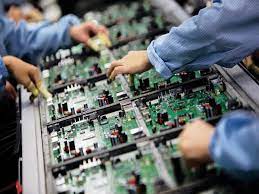
Currently valued at $45-50
billion, India’s semiconductor demand is
expected to reach $100-110 billion by 2030, S
Krishnan, Secretary at the Ministry of
Electronics and Information Technology (MeitY)
said. He was speaking at the first ‘Nano
Electronics Roadshow’ held at the Indian
Institute of Science (IISc) on Thursday, where
he underscored the critical role of MeitY’s Nano
Centres in fostering innovation and talent
development, stating that the government is
building a semiconductor-ready workforce of
85,000 professionals. Krishnan highlighted that
currently, nearly 70-75% of investments in major
semiconductor facilities come from taxpayer
money, making every Indian a stakeholder in this
mission. With 20% of the global semiconductor
design workforce based in India, Krishnan said
the success of the India Semiconductor Mission
is a shared responsibility of the government,
industry, and academia.
Source: https://www.newindianexpress.com/,
March 28, 2025
TOP
Information Technology
Make in India’s Leap in
Electronics Manufacturing & Exports
Not long ago, India relied
heavily on imports, with most electronics being
imported. However, things are changing fast.
With the Make in India initiative, the country
is now building its own electronics industry,
attracting big investments and boosting local
production. As a result, India’s electronics
exports are growing rapidly, even surpassing
some traditional sectors like textiles. With
strong government support and expanding
factories, India is well on its way to becoming
a global hub for electronics manufacturing.
Launched in 2014, the Make in India initiative
has been a pivotal step in India's
nation-building efforts. The initiative was
conceived during a period when India's economic
growth had sharply declined, and the country
faced critical challenges in sustaining its
development trajectory. Against this backdrop,
"Make in India" was designed to transform India
into a global hub for design and manufacturing.
Its core objectives were to facilitate
investment, encourage innovation, and develop
world-class infrastructure. As one of the
pioneering 'Vocal for Local' initiatives, it
sought not only to boost India's manufacturing
capabilities but also to showcase its industrial
potential on a global stage.
Source: https://pib.gov.in/,
March 26, 2025
First made-in-India
microcontroller coming in 6 months
India’s first indigenously
designed commercial microcontroller is likely to
be launched in the next six-to-seven months by
Chennai-based Mindgrove Technologies, its
co-founder and chief executive Shashwath T R
told FE. The company has begun production of its
Secure IoT chip. The Secure IoT chip has
applications across wearables (smartwatches and
headphones), connected home devices (smart
locks, speakers, and smart fans), smart city
devices (electricity, water and gas meters),
access control devices (biometrics), and devices
such as thermal printers and point-of-sale (POS)
machines, in addition to EV battery management.
The quantum of production will be decided over
the next few weeks as the firm finalises
contracts with companies requiring the
microcontroller, Shashwath said. As it prepares
for commercial production of the first chip, the
design startup is also in the process of
finalising the design of its second chip — the
Vision SoC chip. Aimed at high-performance edge
computing and video processing applications,
Vision SoC (System-on-Chip) will be suited for
applications and devices whose functions involve
identifying and processing video information.
Source:
By Urvu Malvania, https://www.financialexpress.com/,
March 30, 2025
Elon Musk's Grok AI is now
on Telegram

Just a few days after Elon Musk's
Grok AI broke the internet with its savage
comments, xAI is ready to take on another social
media platform. Recently, it has been announced
that Grok AI is now integrating into Telegram.
Previously, users could only interact with the
chatbot on either X (formerly known as Twitter)
or the Grok app. But now Telegram users will
also be able to chat with it. This step could be
a strategy to increase the Grok AI's reach and
give Telegram another chance to fight the AI
world. For context, Telegram has been facing
legal issues since August 2024. Since the last
arrest of CEO Pavel Durov, the messaging app has
been accused of being an easy platform for
criminal activities and more. Moreover, with no
AI features, users were slowly losing interest,
especially when its competition, WhatsApp, was
actively introducing MetaAI features. And now
with Grok AI, Telegram has climbed up the ladder
and is speculated to be in the headlines for
some time.
Source: By Unnati Gusain,
https://www.indiatoday.in/, March 27, 2025
TOP
Consumer Electronics
Foldable Smartphone Market
to See its First Decline in 2025 Before Robust
Comeback in 2026
This year is expected to be even
tougher, with Counterpoint forecasting
single-digit negative growth for the market in
2025. “I don’t see many positives this year and
we are actually expecting negative growth for
the segment, which will be a first,” observed
Senior Analyst Jene Park. But it is definitely
not a sign of the market peaking; rather it is a
sign of regrouping before 2026, which is
expected to be exciting and rejuvenating for the
segment with the entry of Apple and a slew of
clamshells.” Counterpoint Research’s latest
Foldable and Rollable Display Shipment and
Technology Report supports this growth view for
2026 with the forecast of a mid-double-digit YoY
growth in panel procurement. “The supply chain
is telling us foldable order books are filling
up further out.. At the moment, this doesn’t
look like a market that is plateauing – it looks
like a market that is about to transform. And
that requires a lot of planning, hence the
slight pullback this year.
Source: https://www.counterpointresearch.com/,
March 28, 2025
Shipments
of ‘Made in India’ Smartphones Grew 6% YoY in
2024 Amid Record Exports
Made in India’ smartphone
shipments grew 6% YoY in 2024 driven by
increasing exports from Apple and Samsung,
according to Counterpoint’s ‘Make in India’
Service. Apple and Samsung alone accounted for
around 94% of India’s smartphone exports. Both
the brands have significantly expanded their
manufacturing in India to align with the
country’s objective of reducing reliance on
imports and strengthening its presence in the
global supply chains. The Indian government’s
PLI (Production-Linked Incentive) scheme has
encouraged global manufacturers to set up or
expand their production facilities in the
country. All this has resulted in increasing
local manufacturing. Major global smartphone
manufacturers are increasingly diversifying
production to ensure a more resilient supply
chain and minimize the risks associated with
over-reliance on a single country. India
presents itself as a great manufacturing
destination due to a huge local market,
affordable labor costs and favorable schemes
from the government focused on increasing local
manufacturing. Smartphone manufacturing in India
is expected to grow in double digits in 2025,
along with increasing local value addition.
Source: https://www.counterpointresearch.com/,
March 20, 2025
Oppo, OnePlus, Vivo and
other Chinese companies up for local parts in
electronics play
As smartphone and consumer
electronics makers look to reduce dependency on
Chinese imports for components, taking the lead
in building a local supply chain ecosystem are
Chinese companies. Brands like Haier, Hisense,
Oppo, OnePlus and Vivo are all working to
significantly increase local value addition in
their products, driven by persistent regulatory
pressure and a growing Indian supplier base. The
Chinese refrigerator and television maker has
reached out to local component manufacturers to
set up plants near its production units, and one
such facility - producing wire baskets for deep
freezers - has already come up near its Pune
plant, he said. Next in line is refrigerator
door glass manufacturing by local companies.
Haier is investing ₹300 crore for manufacturing
of components like injection moulding and
printed circuit boards in India. TV and
appliance maker Hisense, which has recently
started local production in India through
contract manufacturers, is also exploring such a
route, a senior company official said.
Source: By Writankar Mukherjee,
https://economictimes.indiatimes.com/, March 22,
2025
India
slaps Samsung with tax demand of $601 million
for telecom imports

India has ordered Samsung and its
executives in the country to pay $601 million in
back taxes and penalties for dodging tariffs on
import of key telecoms equipment, a government
order showed, for one of the biggest such
demands in recent years. The demand represents a
substantial chunk of last year's net profit of
$955 million for Samsung in India, where it is
one of the largest players in the consumer
electronics and smartphones market. It can be
challenged in a tax tribunal or the courts. The
company, which also imports telecoms equipment
through its network division, received a warning
in 2023 for misclassifying imports to evade
tariffs of 10% or 20% on a critical transmission
component used in mobile towers. Samsung pushed
India's tax authority to drop the scrutiny,
saying the component did not attract tariffs and
officials had known its classification practice
for years.
Source: https://economictimes.indiatimes.com/,
March 22, 2025
TOP
Telecom
Regular tariff hikes by telecom companies to
continue in future: Report
The regular tariff hike by the
telecom operators in the country will continue
in future as the companies plan to increase
Average Revenue Per User, says a report by
Centrum Institutional Research. The telecom
industry has already witnessed three major
tariff hikes in December 2019, November 2021,
and July 2024. The report suggests that regular
tariff hikes will continue in the future, which
will help telecom companies improve their
revenue. With rising prices, more customers are
likely to shift to premium plans, leading to
higher spending per user. It said, "ARPU is
surging due to deliberate pricing strategies and
improving customer mix. Three tariff hikes;
Dec'2019, Nov'2021 & July'2024. We expect
regular tariff hikes going ahead too." The
report also noted that India's 2G customer base
is expected to shrink significantly over the
next 5-6 years. Currently, around 250 million
customers in India still use 2G services. Among
telecom companies, Airtel has 23 per cent of its
customers on 2G, while Vodafone Idea (VIL) has
around 40 per cent. However, with the increasing
adoption of 4G and 5G, the number of 2G users is
expected to become negligible over time.
Source: https://www.deccanchronicle.com/,
March 25, 2025
Vodafone Idea’s relief
hopes fade as DoT puts spectrum surrender on
hold
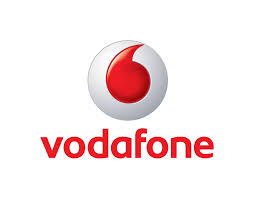
The department of
telecommunications (DoT) has put on hold its
proposal to offer telecom operators the option
of surrendering airwaves bought before the 2022
auctions, a move which deals yet another blow to
Vodafone Idea after the recent government
decision not to waive interest and penalties
related to adjusted gross revenue dues. The
development came amid demands by Bharti Airtel
and Reliance Jio that the government have a
clause for refund of the money that they have
fully paid up for the spectrum bought before
2022 but could have now surrendered, said
officials aware of the matter. Vodafone Idea was
hoping to immediately surrender some spectrum
bought before 2022 and use it partly to pay for
bank guarantees in the near future. Surrender of
excess airwaves could have reduced the telco's
government obligations by ₹30,000-₹40,000 crore,
depending on the quantum of spectrum returned.
Officials said the move to allow surrender of
spectrum would have involved a complicated
process to change the rules of auctions
conducted before 2022, which was also a
deterrent.
Source: By Kiran Rathee, https://economictimes.indiatimes.com/,
March 29, 2025
Tejas Networks Secures Rs
189 Cr Incentive Under Telecom PLI Scheme
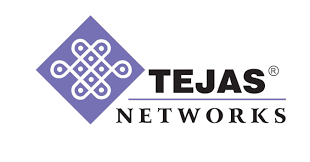
Tata Group-backed Tejas Networks
Ltd has received Rs 189.17 crore from the
Ministry of Communications, Department of
Telecommunications, as an incentive under the
Production Linked Incentive (PLI) scheme for
Telecom and Networking Products for the
financial year 2024-25 (FY25). The incentive is
part of the centre’s broader initiative to boost
domestic manufacturing and enhance India’s
telecom infrastructure. As per the company’s
regulatory filing with the Bombay Stock Exchange
(BSE), Tejas Networks received Rs 189.1657 crore
on 29 March. This disbursement represents the
first tranche, accounting for 85 per cent of the
incentive allocated for the first two quarters
of FY25. Tejas Networks specializes in optical
and data networking solutions, catering to
telecommunications service providers, internet
service providers, utilities, defence and
government organizations across more than 75
countries.
Source: https://apacnewsnetwork.com/,
March 31, 2025
Reliance Jio Expands Its
5G Network by Introducing the 26 GHz mmWave Band
Across India

Reliance Jio has officially
expanded its 5G services with the rollout of the
26 GHz band-better known as mmWave
frequency-across 21 states and union territories
in India. This latest development marks a
focused shift toward enterprise-grade 5G
connectivity, as mmWave offers high-speed,
low-latency performance, but with infrastructure
demands that differ from traditional consumer
bands. The 26 GHz band isn't entirely new to the
5G ecosystem-it's part of the millimeter wave (mmWave)
spectrum that's known for ultra-fast data
transmission and reduced latency. However, the
trade-off is its limited range, which requires a
dense network of base stations to be effective.
Because of these constraints, mmWave is
primarily intended for enterprise-level
applications, not everyday consumer use.
Reliance Jio has now introduced mmWave
capabilities in states and territories such as
Tamil Nadu, Maharashtra, Delhi, Gujarat,
Rajasthan, Kerala, and West Bengal, among
others. The move comes as part of Jio's efforts
to meet minimum rollout obligations set by the
Department of Telecommunications (DoT) and
reflects its strategy to diversify 5G offerings.
Source: By Kabir Jain, https://www.gizbot.com/,
March 31, 2025
TOP
EV’s & Auto Electronics
Govt weighs EV charging
expansion across key infra with ₹2,000 crore
fund
The Union government is planning
to expand electric vehicle (EV) charging
infrastructure across major sectors such as
ports, roads, railways, and airports, while
incorporating battery swapping facilities, a
senior official said. The Ministry of Heavy
Industries (MHI) is in discussions with the
Ministry of Ports, Shipping and Waterways, the
Airports Authority of India (AAI), the National
Highways Authority of India (NHAI), and various
state governments to identify potential
locations for installing EV charging stations.
As part of the ₹10,900-crore PM E-Drive scheme,
the government has allocated ₹2,000 crore for
the installation of EV charging stations and
battery swapping facilities across the country.
The initiative aims to improve charging
connectivity for India’s growing EV market and
reduce reliance on internal combustion engine
vehicles. India aims to increase the number of
public EV charging stations to 72,300 by FY26,
up from the current 32,500.
Source: By Puja Das, https://www.business-standard.com/,
March 31, 2025
BYD’s bold India strategy:
Outsmarting Tesla in the EV race
.png)
Electric vehicle maker, BYD
(Build Your Dreams) announced plans to set up
its manufacturing plant in Telangana. With
Chinese EV makers facing additional import
tariffs in Europe and the U.S., BYD is focused
on other markets with potential EV demand
growth. The company is set to invest Rs 85,000
crore ($10 billion) in its state-of-the-art
manufacturing plant in India. Does this mean BYD
has an advantage over Tesla’s much-awaited debut
in the Indian market? By setting up a
manufacturing plant, the Chinese EV can localize
its production. BYD has decided to take the
plunge and has revealed how serious it is for
the Indian market as it will set up its first
manufacturing plant here. With the Indian
Government’s new lower tariff rates on EVs, this
gives companies like BYD a much-needed shot in
the arm. According to a report by Times of
India, Telangana government officials confirmed
that the state government has identified 200
acres of land for BYD.
Source: https://www.financialexpress.com/,
March 31, 2025
Maharashtra's Tax
Reduction On Electric Vehicles Aims To Enhance
Affordability & Sales
In a bid to lead the charge
towards sustainable transportation, Maharashtra
has taken a bold step by slashing taxes on
electric vehicles (EVs), aiming to make them a
more attractive option for consumers. By
eliminating the additional 6% tax that was
previously levied on EVs, the state government
has paved the way for a significant price
reduction in electric vehicles. This policy
adjustment is anticipated to spur sales of
electric vehicles, contributing to a cleaner
environment and promoting eco-friendly
transportation solutions. This tax reduction
strategy by Maharashtra is seen as a pivotal
move to encourage the uptake of luxury electric
vehicles, which often come with a hefty price
tag due to various taxes imposed by both central
and state governments. These taxes are a major
revenue source but also make luxury vehicles
less accessible to the average buyer. By making
high-end electric cars more affordable,
Maharashtra is not only fostering a shift
towards greener vehicles but also aligning with
the national agenda to escalate electric vehicle
adoption across India.
Source: https://www.drivespark.com/,
March 29, 2025
Centre aims green
logistics at ports, eyes setting up EV charging
infra
The union heavy industries
ministry has consulted the ministry of ports,
shipping, and waterways to determine locations
across ports for installing electric vehicle (EV)
charging stations, according to two officials
aware of the development. These EV charging
stations will be installed on ports as a part of
the ongoing ₹10,900-crore PM E-drive scheme, the
officials said. Email queries to the ministry of
heavy industries and the ministry of ports,
shipping, and waterways were unanswered till
press time. The government has allocated a
massive corpus of ₹2,000 crore towards
installation of EV charging stations across the
country to ensure charging connectivity for
India's rapidly growing electric vehicle market.
Two kinds of vehicles are likely to need EV
charging stations on ports as electrification of
mobility takes its course in the country—ground
operations in ports, and cargo and commercial
vehicles such as trucks.
Source: By Manas Pimpalkhare,
Rituraj Baruah, https://www.livemint.com/, March
30, 2025
TOP
Defence & Solar
Waaree Energies launches
India's largest solar cell facility in Gujarat
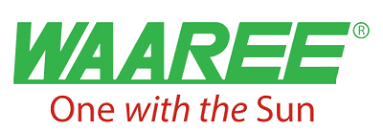
Clean energy player Waaree
Energies Ltd on Saturday announced the launch of
its solar cell facility having a capacity of 5.4
gigawatt (GW) at Chikhli in Gujarat. Union New
and Renewable Energy Minister Pralhad Joshi and
Gujarat Chief Minister Bhupendra Patel attended
the inauguration event along other senior
government officials, Waaree Energies said in a
statement. "Bharat's largest solar cell
manufacturing Gigafactory inaugurated by Waaree
Energies in Chikhli, Gujarat," the company said.
The facility is spread across 150 acres, with a
built-up area of 101 acres. Speaking on the
occasion, Joshi said the launch of one of
largest solar cell facility embodies the spirit
of Atmanirbhar Bharat and stands as a tribute to
India's growing prowess in the global renewable
energy landscape.
Source: https://www.business-standard.com/,
March 29, 2025
TOPCon solar cell based on
aluminum contacts achieves slightly lower
efficiency than silver-based counterpart
A group of researchers led by the
University of New South Wales (UNSW) in
Australia has developed a tunnel oxide
passivated contact (TOPCon) solar based on
aluminum (Al) contacts placed on the rear side.
The proposed cell configuration is aimed at
replacing expensive silver (Ag) pastes used for
cell contacts with low-cost aluminum, which can
be seamlessly integrated into the existing
industrial screen-printing infrastructure and is
already well-established in solar cell
manufacturing,” the research project's lead,
Ning Song, told pv magazine, noting that Al
pastes cost approximately $3–7/kg, which is more
than 100 times cheaper than silver (Ag) pastes
and significantly cheaper than emerging copper
(Cu) pastes. The contacts were then
screen-printed with a conventional Al paste
provided by Japanese specialist Toyo Aluminum
K.K. In the paper “Integration of aluminum
contacts in TOPCon solar cells: A pathway to
reduce silver usage,” published in Solar Energy
Materials and Solar Cells, the scientists
explained that they used Al contacts prepared
with a laser contact opening (LCO) tool.
Source: By Emiliano Bellini,
https://www.pv-magazine.com/, March 28, 2025
India's Solar PV
Manufacturing Capacity to Reach 125 GW by 2030
India's solar PV module
manufacturing capacity will increase to 125
gigawatt (GW) by 2030 from the current 80 GW,
and its installed solar cell manufacturing
capacity will soon touch 40 GW from 25 GW at
present, Union Minister of New and Renewable
Energy Pralhad Joshi said in Gujarat's Navsari
district on Saturday. In 2014, solar PV module
manufacturing was nearly absent in the country,
he said after inaugurating a state-of-the-art
5.4 GW solar cell manufacturing facility of
Waaree Energies Limited at Degam here. Today,
companies like Waaree are producing 80 GW solar
PV modules. By 2030, our total solar PV
manufacturing capacity will be 125 GW.
Similarly, solar cell manufacturing was nil in
2014. But today we are manufacturing 25 GW, and
very soon we will reach a target of 40 GW. We
are moving ahead with the thinking of integrated
solar, right from polysilicon to module, to be
manufactured in India. India has emerged as the
world's third largest producer of renewable
energy, and will achieve the target of 500 GW of
renewable energy capacity by 2030 from 220 GW
currently, the Union minister added.
Source: https://money.rediff.com/,
March 29, 2025
TOP
MSME
(Special section of the MSME related news under ELCINA Micro
& Small Industry Forum)
Govt Mandates Companies to
Report MSME Payment Delays Over 45 Days
The Ministry of Micro, Small and
Medium Enterprises ( MSME ) issued Notification
No. S.O. 1376(E) dated March 25, 2025, directing
all companies that procure goods or services
from Micro and Small Enterprises (MSEs) to
report any payment delays exceeding 45 days from
the date of acceptance or deemed acceptance of
supplies. In exercise of powers conferred by
section 9 of the Micro, Small and Medium
Enterprises Development Act, 2006 (27 of 2006)
and read with section 15 of the said Act, the
Central Government hereby directs that all
companies who get supplies of goods or services
from micro and small enterprises and whose
payments to micro and small enterprise suppliers
exceed forty five days from the date of
acceptance or the date of deemed acceptance of
the goods or services as per the provisions of
the said Act, shall submit a half yearly return
to the Ministry of Corporate Affairs.
Source: https://www.taxscan.in/,
March 28, 2025
Vi partners with WB's
export body to boost MSME digital transformation
Telecom major Vodafone Idea (Vi)
on Tuesday said it has signed a memorandum of
understanding (MoU) with the West Bengal State
Export Promotion Society (WBSEPS) to accelerate
digital transformation of micro, small and
medium enterprises (MSMEs) in the state. The
move comes as the West Bengal government aims to
strengthen its MSME ecosystem, which employs
over 10 million people. The collaboration will
leverage the digital assessment and advisory
initiative of the telecom company and it has
already evaluated over 1.9 lakh MSMEs nationwide
since its launch in 2022, the statement said.
Under the partnership, the telecom major will
provide localised digital tools and training
modules in Bengali, and host webinars to enhance
tech adoption among West Bengal's MSMEs.
Source: https://www.business-standard.com/,
March 25, 2025
New financial year set to
bring key tax, pension, and MSME reforms
A host of financial and
regulatory changes set to take effect from April
1, marking the start of the 2025-26 financial
year, are expected to boost consumption,
strengthen social security and expand business
opportunities for small enterprises. These
include revised income tax slabs, a unified
pension scheme (UPS) for central government
employees, and enhanced turnover ceilings for
micro, small and medium enterprises (MSMEs). The
new tax regime will see the basic exemption
limit raised from ₹3 lakh to ₹4 lakh, while the
tax rebate under Section 87A has been enhanced
to reduce the burden on middle-income taxpayers.
Under these revisions, individuals earning a
taxable income of ₹12 lakh from April 1, 2025,
onwards will save ₹83,200 (including cess) in
taxes. Madan Sabnavis, chief economist at Bank
of Baroda, said the impact of the tax cut would
become evident once consumer spending picks up.
Source: By Harsh Kumar, Monika
Yadav, https://www.business-standard.com/, March
31, 2025
MSMEs estimated at 7.3
Crores as of 2023-24, Wide Variation in State
Sectoral Distribution
Over the past five decades, the
Micro, Small, and Medium Enterprises (MSME)
sector has grown into a vital and dynamic force
in India’s economy. Beyond driving economic
growth, it plays a crucial role in social
development by nurturing entrepreneurship and
creating vast employment opportunities with
relatively low investment, second only to
agriculture in job generation. According to the
73rd round of the National Sample Survey
(2015-16), India had approximately 633.88 lakh
unincorporated, non-agricultural MSMEs engaged
in various sectors, including manufacturing
(196.65 lakh), trade (230.35 lakh), and other
services (206.85 lakh). The micro-enterprise
segment dominates this landscape, making up over
99% of all MSMEs, followed by small and medium
enterprises, which account for just 0.52% and
0.01%, respectively. Interestingly, MSMEs are
nearly evenly distributed between rural (51.25%)
and urban (48.75%) areas, underscoring their
widespread impact across the country.
Source: https://factly.in/, March
31, 2025
TOP
ELCINA EVENTS , ACTIVITIES & SERVICES

Registration
For more information, please contact:
Rajesh Rawat –
9911445890 /
rajesh@elcina.com
ELCINA Publications
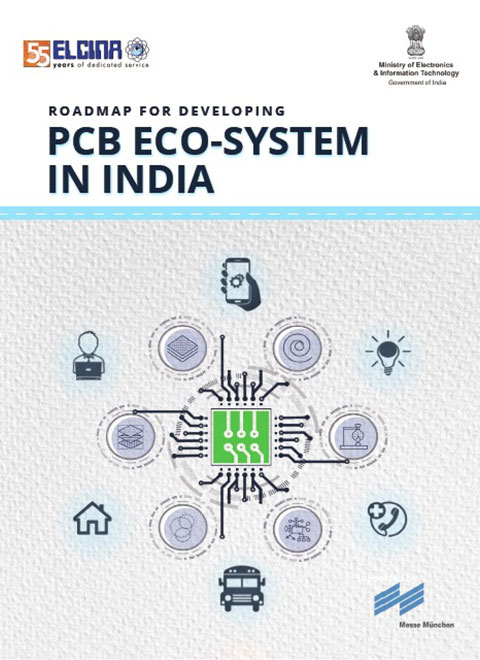
https://elcina.com/roadmap-for-developing-pcb-eco-system-in-india |
Roadmap For Developing PCB
Eco-System in India
Key Findings
-
Indian PCB market and industry size in terms of
domestic production, exports, and imports
-
Growth drivers and challenges (needs & gaps) in
the Indian PCB industry
-
Growth potential of PCB manufacturing in India
and identify enablers for creating &
strengthening the domestic value chain
-
Key inputs required viz. investments,
technology, and infra eco-system
Details of key PCB value chain players – global and
domestic, who can be invited to invest to establish
a strong PCB industry |
|
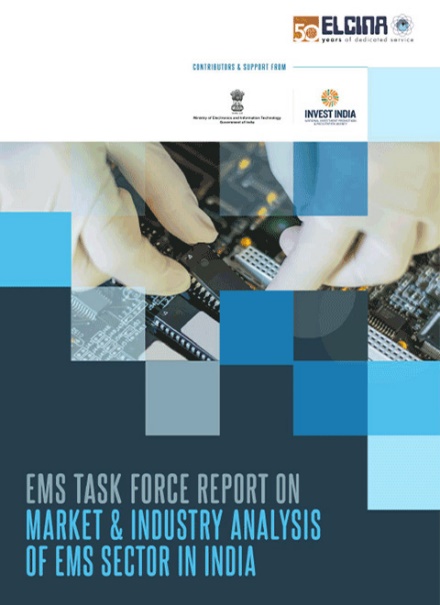
https://elcina.com/ems-task-force-report-on-market-industry-analysis-of-ems-sector-in-india |
EMS Task Force Report
Key Findings
-
Currently EMS Industry (Contract Manufacturing
Services) are valued 832 Bn $ and are projected
to grow 1055 Bn by 2025.
-
Domestic electronics manufacturing is estimated
at USD 75 Bn of which 39 Bn constitutes EMS
value. This is divided into 23.5 Bn domestic
Mfg. and USD 15.5 Bn PCBS/Sub-Assembly imports.
-
Further USD 53.5 Bn is finished Electronic Goods
imports of which USD 17 Bn is EMS value. Thus
total EMS opportunity loss is US$ 32.5 Bn (15.5
+17).
-
The report estimates that EMS production can
grow realistically from USD 23.5 Bn today to USD
152 Bn by 2025 at CAGR of 45%. This will meet
75% of the countries EMS requirement of US$ 203
Bn by 2025 against a total estimated market of
400 Bn.
|
|
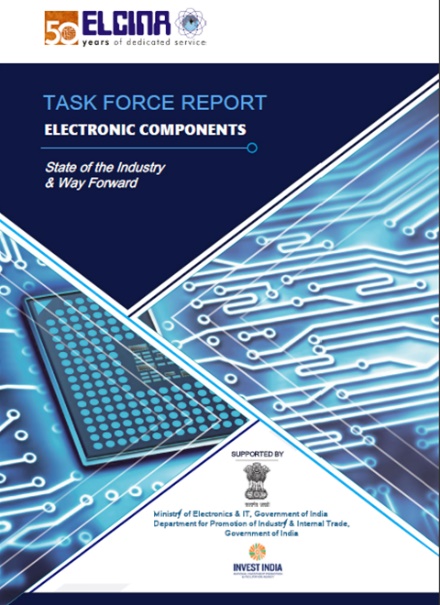
https://elcina.com/elcina-task-force-report-on-electronic-components |
ELCINA Task Force Report on
Electronic Components
Key
Findings
-
Current status of component manufacturing in
India – Areas of competence vs Gaps and
inadequacies
-
Components which urgently require investments
and growth in domestic manufacturing
-
Emerging technology and new components for
upcoming opportunities
-
Constraints and bottlenecks to be addressed
-
Overcoming Policy constraints, WTO (ITA-1)
deadlock and Zero Duty issue
-
Strategy for overcoming these constraints
-
Eco-System requirements- Role of Central and
State Governments
|
|

https://elcina.com/elcina-directory-of-indian-electronics-industry |
ELCINA Directory of Indian
Electronics Industry 2024-25
Description
-
ELCINA Directory of Indian Electronics Industry
– includes the updates on Indian Electronics
Industry and a host of additional improved
features covering business environment,
statistical industry scan, company databases
plus various projections. This handy compendium
with its easy-to-read format attracts the
attention of a growing number of users (within
India and abroad)
-
Apart from electronics industry, the users of
this Directory range from financial
institutions, commercial banks, FIIs,
Consultancy organizations as well as industry
promotion institutes across the world….
|
TOP
FORTHCOMING EVENTS & GENERAL INFORMATION
TOP
|
A newsletter published by ELCINA, New
Delhi. The information contained in this newsletter
is for private circulation only. Despite our best
efforts, some errors could have crept in. You are
advised to verify authenticity of the information
before further use.
Electronic Industries Association of India (ELCINA
)
ELCINA House, 422 Okhla Industrial Estate,
Phase-III, New Delhi 110020 (India).
E-Mails:
info@elcina.com
Tel: 011-41615985,
41011291,
Website:
www.elcina.com
|
|